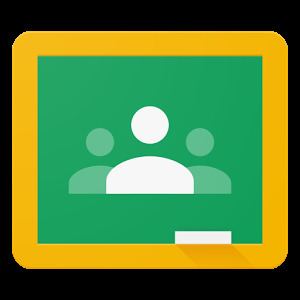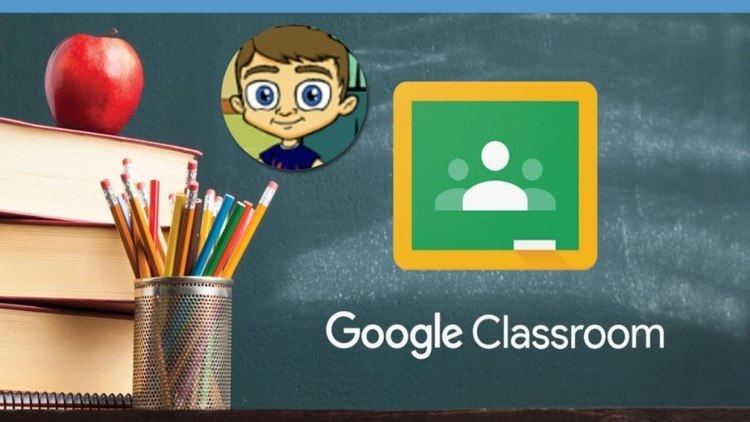Type Education | Operating system Website classroom.google.com | |
 | ||
Initial release August 12, 2014; 2 years ago (2014-08-12) | ||
Google Classroom is a blended learning platform for schools that aims to simplify creating, distributing and grading assignments in a paperless way. It was introduced as a feature of Google Apps for Education following its public release on August 12, 2014. On June 29, 2015, Google announced a Classroom API and a share button for websites, allowing school administrators and developers to further harness Google Classroom.
Contents
- How to Use Google Classroom As A Teacher Students
- Features
- Assignments
- Grading
- Communication
- Time cost
- Archive course
- Mobile application
- Reception
- References
How to Use Google Classroom As A Teacher & Students
Features

Google Classroom ties many of Google's services together to help educational institutions go to a paperless system. Assignment creation and distribution is accomplished through Google Drive while Gmail is used to provide classroom communication. Students can be invited to classrooms through the institution's database, through a private code that can then be added in the student interface or automatically imported from a School Information Management System. Google Classroom integrates with students' and teachers' Google Calendar. Each class created with Google Classroom creates a separate folder in the respective Google service where the student can submit work to be graded by a teacher. Communication through Gmail allows teachers to make announcements and ask questions to their students in each of their classes. Teachers can add students directly from the Google Apps directory or can provide a code that can be entered for access to the class by students.
In contrast to Google's regular services, Google Classroom does not show any advertisements in its interface for students, faculty, and teachers, and user data is not scanned or used for advertising purposes.
Assignments
Assignments are stored and graded on Google's suite of productivity applications that allow collaboration between the teacher and the student or student to student. Instead of sharing documents that reside on the student's Google Drive with the teacher, files are hosted on the student's Drive and then submitted for grading. Teachers may choose a file that can then be treated as a template so that every student can edit their own copy and then turn back in for a grade instead of allowing all students to view, copy, or edit the same document. Students can also choose to attach additional documents from their Drive to the assignment.
Grading
Google Classroom supports many different grading schemes. Teachers have the option to attach files to the assignment which students can view, edit, or get an individual copy. Students can create files and then attach them to the assignment if a copy of a file wasn't created by the teacher. Teachers have the option to monitor the progress of each student on the assignment where they can make comments and edit. Turned in assignments can be graded by the teacher and returned with comments to allow the student to revise the assignment and turn back in. Once graded, assignments can only be edited by the teacher unless the teacher turns the assignment back in.
Communication
Announcements can be posted by teachers to the class stream which can be commented on by students allowing for two-way communication between the teacher and students. Students can also post to the class stream but won't be as high of a priority as an announcement by a teacher and can be moderated easily. Multiple types of media from Google products such as YouTube videos and Google Drive files can be attached to announcements and posts to share content. Gmail also provides email options for teachers to send emails to one or more students in the Google Classroom interface. Classroom can be accessed on the web or via the Android and iOS Classroom mobile apps.
Time-cost
Teachers can add students by giving students a code to join the class, leaving the teacher more time to teach. Teachers that manage multiple classes can reuse existing announcements, assignments, or questions from another class. Teachers can also share posts across multiple classes and archive classes for future classes. Students' work, assignments, questions, grades, comments can all be organized by one or all classes, or sorted by what needs reviewing.
Archive course
Classroom allows instructors to archive courses at the end of a term or year. When a course is archived, it is removed from the homepage and placed in the Archived Classes area to help teachers keep their current classes organized. When a course is archived, teachers and students can view it, but won't be able to make any changes to it until it is restored.
Mobile application
Google Classroom apps are available for iOS and Android devices. With the app, teachers can create classrooms, post to classroom feeds, communicate with students, and view assignments. With the mobile app, students and teachers can:
Reception
eLearningIndustry tested and made a review of Google Classroom, in which they highlighted many positive and negative aspects. Among Classroom's strengths, the review highlighted ease of use, universal device accessibility, use of Google Drive as an effective way for teachers to quickly share assignments with students, the paperless process meaning the end of printing, handing out, and potentially losing work, and the fast feedback system between students and teachers. Among Classroom's disadvantages, the review highlighted the service's heavy integration of Google apps and services with limited or no support for external files or services, lack of automated quizzes and tests, and a lack of discussion forums or live chats that can aid in feedback efforts.
Google has been criticized for allegedly data mining students' browsing history, searches, and other usage of services for advertising. The Federal Trade Commission complained parents were not given the option to opt out of data collection.
Following a court case about the data mining, where the court claimed Google's scanning of user data in the Education program violated user rights, Google announced it would no longer scan any content or user data in the Google Apps for Education program for advertising purposes.
